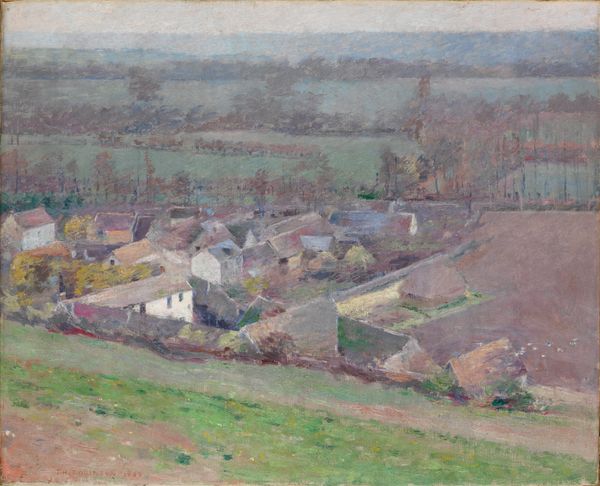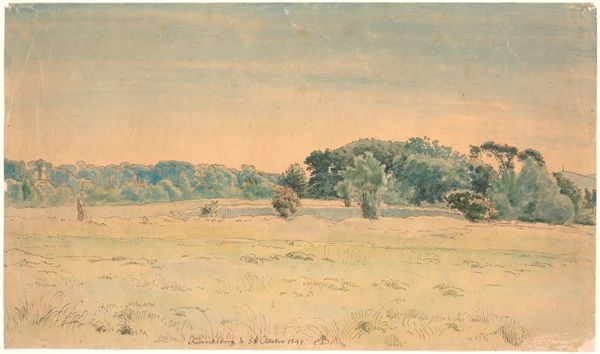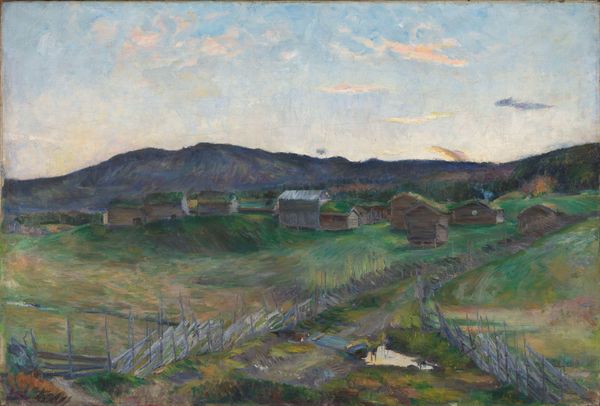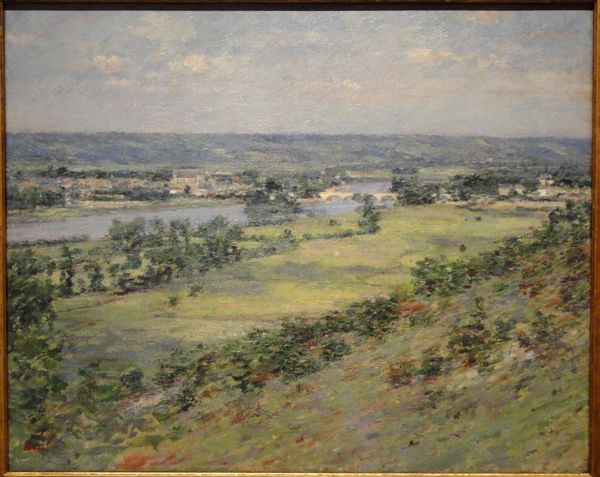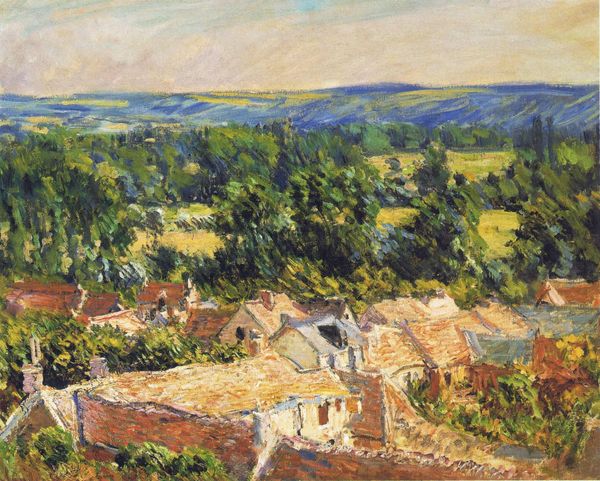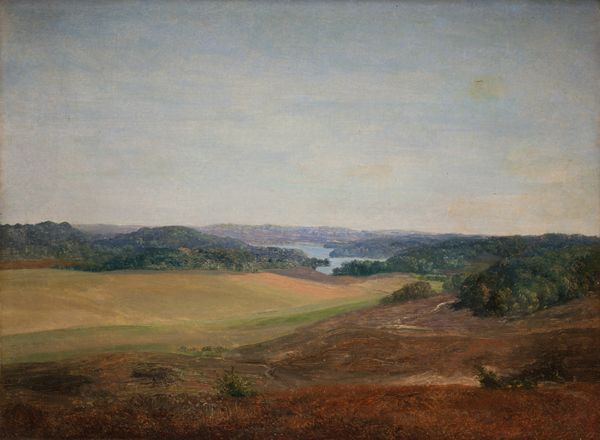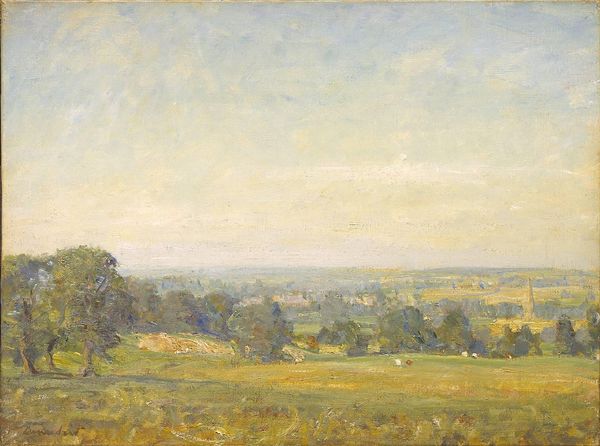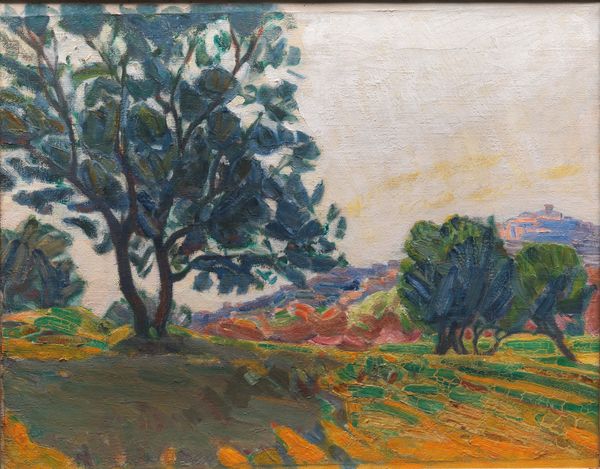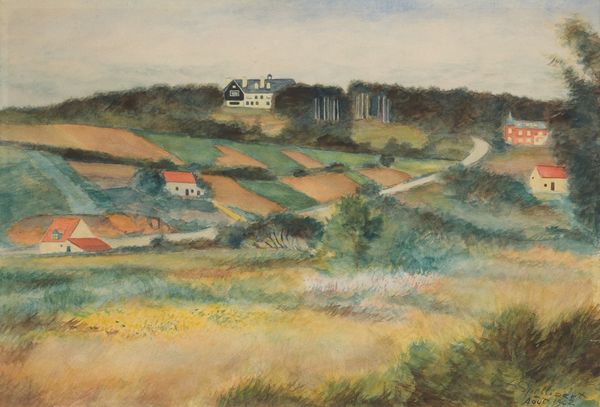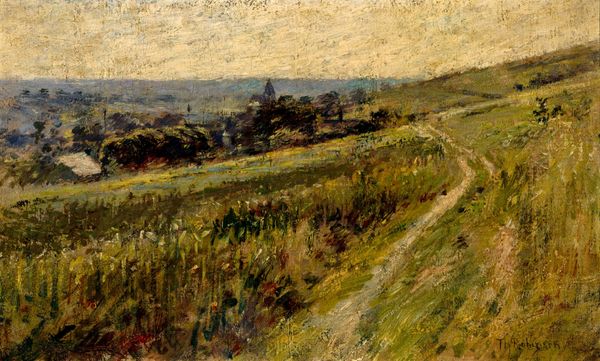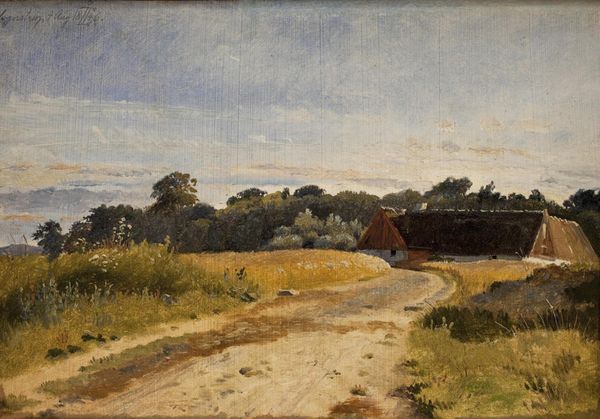
Copyright: Public domain
Curator: There’s a luminous quality to this canvas – the hazy atmosphere softens all the edges, giving it a dreamy feel. Editor: That's exactly the point, I think. We’re looking at "Giverny," a landscape completed by Theodore Robinson in 1889. As the title suggests, it depicts the village where Claude Monet famously lived and worked. Robinson actually spent considerable time there, influenced by Monet’s techniques and theories. Curator: Ah, yes. You can really see that influence in the way Robinson breaks down the light into individual brushstrokes, especially the dab of pinks, blues, and yellows representing the light filtering across those rooftops. They almost vibrate. But there’s also something grounded here, less ethereal than Monet at times. Editor: Absolutely. I think that groundedness comes from Robinson's more straightforward engagement with rural life and landscape. He's concerned with documenting a place, its specific topography and buildings, rather than purely capturing a fleeting impression. While he uses impressionistic techniques like plein-air painting to get a certain level of veracity, there’s a deep social element too – representing Giverny’s transformation into an art colony through imagery. Curator: It is more objective somehow... The colours also tell their own stories, I notice. The roofs and greenery have hints of deep passionate colours of red and lush green... This piece seems a commentary about how the arrival of a great artist and the movement around him infused new life and richness. There's something profoundly symbolic in such interplay between the human and natural worlds here. Editor: It's also interesting how Robinson negotiates his own artistic identity within Monet's very powerful sphere of influence. He's adopting a visual language that’s associated with Monet, but he's using it to communicate something distinct about his own experience and perspective. In that sense, this isn't just a painting of a village, but a document of a cross-cultural and socio-economic shift caused by impressionism. Curator: It’s almost as if, while painting Giverny, Robinson was also painting his place within art history itself. Editor: Exactly. "Giverny" is both a beautiful scene and a complex negotiation of artistic legacy and cultural change. Curator: Indeed. A scene, and so much unseen.
Comments
No comments
Be the first to comment and join the conversation on the ultimate creative platform.
